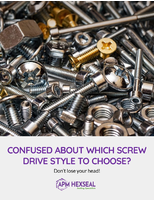Video Inspection System aids automated mill systems.
Press Release Summary:
Two-camera Q-EYE Video Inspection System enables mill operators to spot defects as small as 0.04 in. across strip 60 in. wide at production speeds up to 4,400 fpm. Each 8-bit, black-and-white camera offers 1,392 x 1,040 pixel resolution and will capture image size of 1,000 x 750 cm. Depending on type of processing line being inspected, system can store up to 12 hr of entire strip data in raw video and be programmed to store predetermined section of strip.
Original Press Release:
Unilux Q-EYE Video Inspection Enhances Automated Mill Systems
SADDLE BROOK, NJ February 21, 2006 - When automated systems pick up specific surface flaws, mill engineers often look for the "larger picture" to find a better solution. So contends Mike Simonis, president, Unilux, whose company will demonstrate its Q-EYE video inspection system as the engineering enhancement tool to put defects in perspective for finding their causes and developing processes to prevent them. Unilux will have a Q-EYE system at the ISIS 2006 Surface Inspection Summit, Feb. 21-22 at Luxexpo, Luxembourg.
"Automated systems are very good at detecting programmed flaws," Simonis said. "Sometimes, though, automation is not enough. Statistical data and narrow line-scan images can't give operators and engineers a picture of the area surrounding a defect - a picture that can show them patterns and allow them to use their knowledge of the product and process to find a defect's cause. The Q-EYE allows them to see the flaws in the context of the entire width of the steel strip. From the video images that match up defects captured on the automatic system, the operators can double-check the defect in a high-resolution area scan image and check the surrounding area for other "none classified" defects immediately without having to go out to the line to verify them. Q-EYE complements the automatic system by giving the operator the entire picture. It also provides back-up support should the automatic system go down so they never run blind.
The Q-EYE system is a streamlined, high-resolution video inspection system that enables mill operators to spot defects as small as 1mm (0.04 in) across a strip 150cm (60 in) wide at production speeds up to 1,350m (4,400 ft) per minute. Single-side inspection systems can be installed for under $90,000, and double-sided inspections can be installed for $170,000. Using commercially available image-capture hardware and software, mills can start using Q-EYE within a few hours after commissioning.
Depending on the type of processing line being inspected, the system can store up to 12 hours of entire strip data in raw video and be programmed to store predetermined sections of the strip, reducing the required archiving memory. The operators will view the strip in streaming video, or review in slow motion for even finer detail while still capturing 100% of the strip. Programming for this type of image capture and review greatly enhances an operator's ability to determine what needs to be done with the coil after the automatic system detects the defect. Archiving needs can be established ahead of time and tweaked at the time of commissioning, helping a mill get the system operational even faster. Selected archives can be saved and recalled for use as dictated by the mill's or customer's needs.
A basic two-camera system will meet the needs of a vast majority of hot and finishing mill applications worldwide, as well as coating processing lines. Each camera, an 8-bit black-and-white unit with a video resolution of 1392 x 1040 pixels, can see a 1mm defect on a 1000mm-wide strip moving at full production speeds of 1350m/min. Each camera has its own display, a fast pixel response, 20" flat-panel screen with 1600 x 1200 native resolution and 700:1 contrast ratio, which helps inspectors spot even the slightest defects.
By positioning the cameras for the maximum width of 2.2 m, each camera will capture an image the size of approximately 1000 x 750cm. Some overlapping of each camera's field of vision ensures complete coverage of the strip. If the video system captures images at the rate of 30 frames/sec, the strip can travel at 22.5m/sec or 1350m/min, and the system will provide 100% coverage.
With camera and strobe light arrays located before the recoiler or at critical inspection points along the process, operators at control consoles can now see the strip without leaving their workstations.
"This is essential on coating lines, where any one of hundreds of rolls on multiple platform levels could be the source of a problem," Simonis said. "Tactically locating inspection cameras in cooling towers or after accumulators quickly provides the location of problems in the process. Mills need to resolve problems quickly before 15 to 20 coils with anomalies start to accumulate."
About Unilux
Unilux Inc., headquartered in Saddle Brook , NJ , is in its 44th year of designing and manufacturing industrial surface inspection lighting systems for the printing/converting, metals and papermaking industries and heavy-duty strobe lighting systems for the film and video industry. Unilux currently has sales representatives in 29 countries in North America, Latin America, Europe, Asia, Australia and Africa along with four service centers. For additional information, contact Unilux, Inc., 59 North Fifth St. , Saddle Brook , NJ 07663 USA . Phone: 800-522-0801 (US only) 201-712-1266 (Worldwide) Fax: 201-712-1366 Internet: www.unilux.com.
The new Q-EYE high-resolution video inspection system from Unilux enables mill operators to spot defects as small as 1mm (0.04 in) across a strip image of 100cm (40 in) wide at production speeds up to 1,350m (4,400 ft) per minute.
High resolution images allow operators to confirm defects and other problems in the surrounding areas.
For Additional Information:
Mike Simonis
Unilux Inc.
Tel: +1-201-712-1266
msimonis@unilux.com




